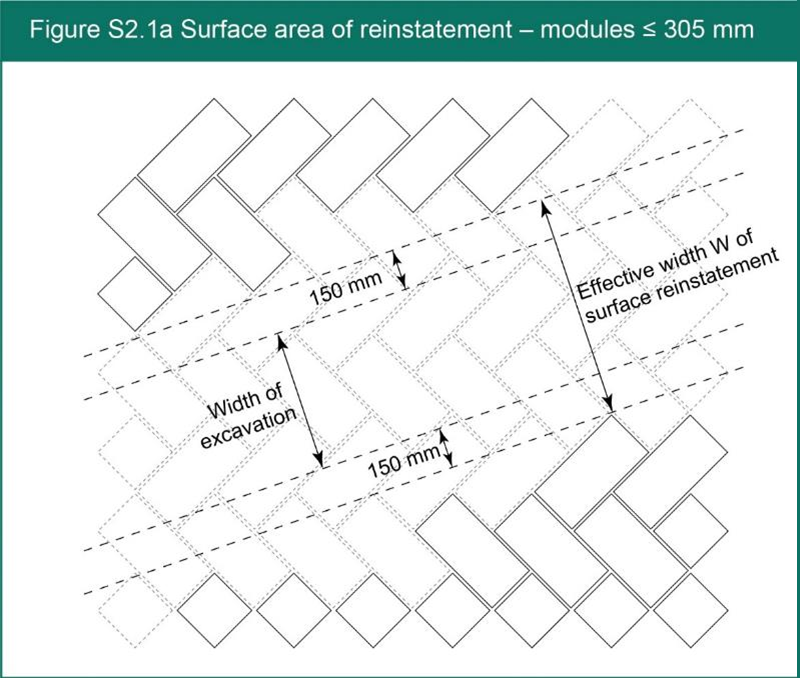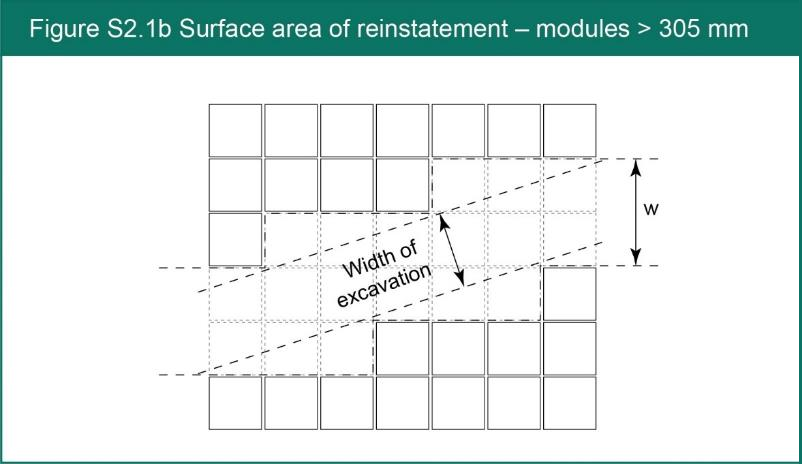- S2.1.1
- The performance requirements of this Code apply to streets that are maintainable at public expense. In all other cases, the performance should match that of the existing construction, as far as reasonably practicable.
- S2.1.2
- The performance requirements apply to immediate, interim and permanent reinstatements. For all interim reinstatements, the main consideration for meeting the requirements set out in S2 is maintaining highway safety. This is particularly important where deferred set mixtures (DSMs) are used in roads, especially the higher traffic road categories.
- S2.1.3
- If the reinstatement exceeds any intervention limit set by S2 during any guarantee period, remedial action must be carried out to return it to the as-laid condition defined in S2.2.1.
- S2.1.4
- No new guarantee period is required unless the cumulative settlement intervention limit is exceeded, and an engineering investigation has been completed in accordance with S2.5. Requirements for the re-excavation and subsequent reinstatement, as determined from the results of an engineering investigation, must be agreed and completed in accordance with S2.5.
- S2.1.5
- Reinstatement of modular surface layers is described in A12. For modular surfaces the effective width of a reinstatement is as follows:
- For modular surfaces where all sides of the module are 305 mm or less, the effective width of the reinstatement (W) is the distance between two parallel lines drawn 150 mm outside the edges of the excavation (see Figure S2.1a).

- For modular surfaces where any side of the module is greater than 305 mm, the effective width of the reinstatement (W) is the distance between the outer extremities of any modules that overlap the edge of the excavation (see Figure S2.1b).

- Where there is evidence of adjoining modules being affected by the excavation, the effective width must be extended to include them.
- For modular surfaces where all sides of the module are 305 mm or less, the effective width of the reinstatement (W) is the distance between two parallel lines drawn 150 mm outside the edges of the excavation (see Figure S2.1a).
- S2.1.6
- Surface deformation resulting from vehicles over-running reinstatements within paved footways, including footpaths and cycle tracks, must be excluded from all measurements carried out for the purposes of monitoring the reinstatement surface performance unless such reinstatements have been carried out under the provisions of S8.7.
- S2.1.7
- Paved footways and their reinstatements can be reasonably expected to withstand occasional overrun by vehicles less than 1.5 tonnes unladen. Where it can be shown that occasional over-run by such vehicles has caused surface deformation to a reinstatement within a paved footway and the adjacent surfaces do not show any associated surface deformation, the authority may notify the undertaker accordingly, whereupon the undertaker must restore the reinstatement to the as-laid profile.
Skip to main content
